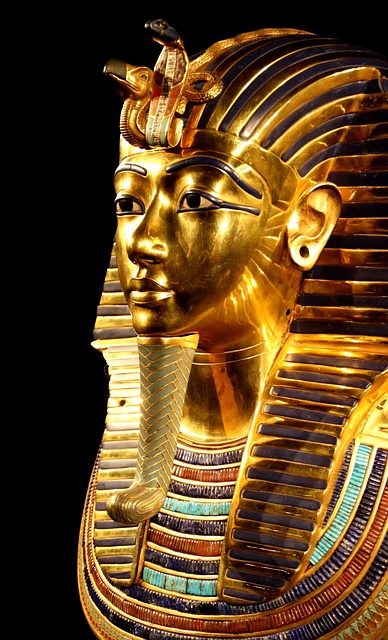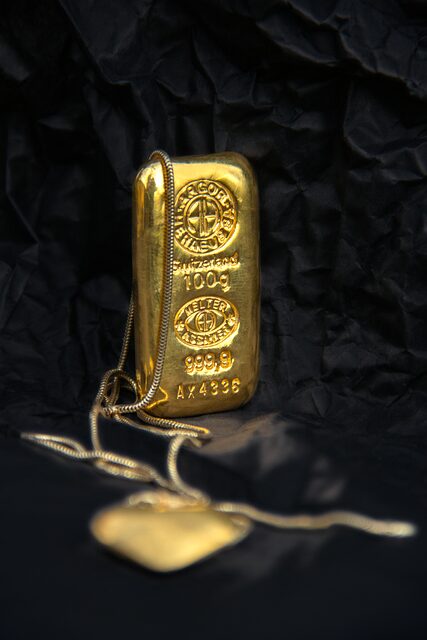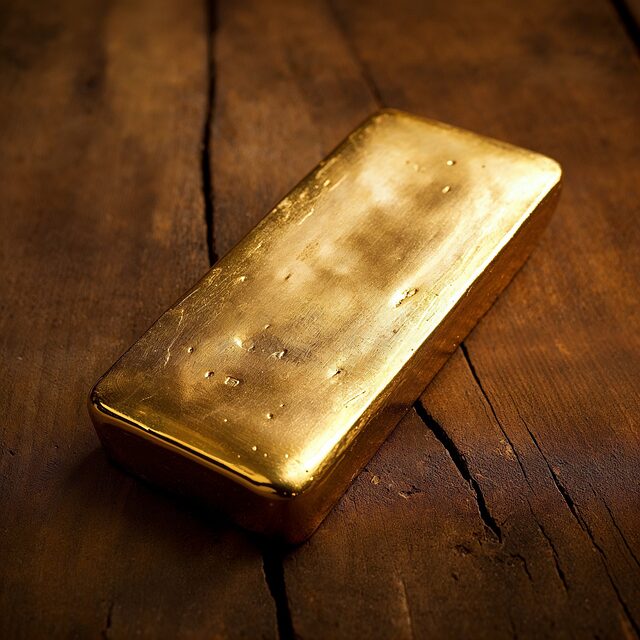Investors looking to incorporate gold or other precious metals into their retirement portfolio can do so through a self-directed IRA, which allows for investment in tangible assets like gold coins and bars. This requires working with a custodian experienced in precious metals to ensure compliance with the IRS's purity standards and maintaining accurate records of all transactions. A self-directed IRA with precious metals can offer historical stability and resilience as part of a diversified investment strategy for retirement. Setting up such an account involves choosing an IRS-approved dealer, selecting a knowledgeable custodian, and adhering to specific IRS rules for investment types and storage. These include the purchase of metals that are at least 99.9% pure and stored in an IRS-approved depository. Investors must conduct due diligence when selecting dealers and custodians, considering their reputation, customer service, and experience with IRA investments to ensure a secure and compliant investment. Transitioning from a traditional IRA to one holding precious metals requires careful adherence to IRS guidelines, including direct rollovers or trustee-to-trustee transfers, to maintain the tax-advantaged status of the account.
Discover the golden path to diversifying your retirement portfolio by leveraging a Self-Directed IRA. This article unveils the journey from traditional IRAs to precious metals, with a focus on gold, as a strategic investment within your self-directed retirement account. We’ll guide you through understanding the unique framework of these accounts, detailing the essential steps to initiate your investment in gold. Navigate the IRS-sanctioned process for transferring existing IRAs, and learn how to collaborate with reputable precious metals dealers. Whether you’re an investor seeking portfolio protection or a saver looking for alternative asset opportunities, this comprehensive guide will equip you with the knowledge to make informed decisions about incorporating gold into your retirement strategy.
- Understanding Self-Directed IRAs for Precious Metals
- Steps to Open a Self-Directed IRA for Gold Investments
- Selecting a Trustworthy Precious Metals Dealer
- IRS Guidelines and Regulations for Gold in IRAs
- The Process of Transferring Existing IRAs to Gold Investments
Understanding Self-Directed IRAs for Precious Metals

When considering the transformation of a traditional IRA into one that holds gold or other precious metals, it’s crucial to delve into the intricacies of self-directed IRAs. These specialized accounts offer investors the flexibility to include a diverse range of assets within their retirement portfolios. Unlike traditional IRAs managed by financial institutions, self-directed IRAs are governed by the account holder, allowing for investments in tangible assets such as gold coins, bars, and rare collectibles. To navigate this realm, one must partner with a custodian experienced in handling precious metals. This custodian is responsible for ensuring that the metals meet the purity and fineness standards set forth by the Internal Revenue Service (IRS). It’s imperative to comprehend the rules and regulations surrounding these investments, as they differ from conventional IRA holdings. Investors must carefully select and purchase IRS-approved precious metals through a trusted dealer, with all transactions transparently documented by the self-directed IRA custodian. This due diligence protects the investor’s retirement savings while also adhering to the legal framework governing retirement accounts. By understanding the workings and compliance requirements of self-directed IRAs for precious metals, investors can effectively diversify their retirement portfolios with these historically resilient assets.
Steps to Open a Self-Directed IRA for Gold Investments

To facilitate the inclusion of gold within your Individual Retirement Account (IRA), you must first establish a self-directed IRA that explicitly permits such investments. This type of IRA grants you the autonomy to allocate a portion of your retirement savings into physical precious metals, like gold coins or bars. The process begins with selecting a custodian experienced in handling alternative assets, including bullion and rare coins. Research and compare various custodians to find one that aligns with your investment goals and offers competitive fees. Once you’ve chosen a custodian, you can proceed with opening an account by providing the necessary personal information and funds.
After establishing your self-directed IRA, you’ll need to familiarize yourself with the Internal Revenue Service (IRS) guidelines regarding IRA investments in precious metals. According to the IRS, your gold must meet certain fineness requirements: it should be at least 99.9% pure for coins and bars. Your custodian will help you navigate these regulations and assist in the purchase process. You can then direct your custodian to acquire approved gold on your behalf, ensuring that all transactions are conducted within the rules of your IRA to maintain its tax-advantaged status. Regularly reviewing your investment strategy and staying informed about market trends and IRS updates will help you make informed decisions for your retirement savings.
Selecting a Trustworthy Precious Metals Dealer

When considering the conversion of an IRA to gold or other precious metals, selecting a reputable and compliant precious metals dealer is paramount. The dealer you choose should be recognized by the Internal Revenue Service (IRS) as adhering to the requirements set forth for IRA-approved precious metals. Their offerings must align with the IRS’s guidelines, which include gold, silver, platinum, and palladium in the form of coins, bars, or rounds that meet certain fineness or purity standards. A trustworthy dealer will provide transparent pricing and detailed information about their inventory’s authenticity and storage options, ensuring compliance with IRS regulations. It is advisable to conduct thorough research, read reviews, and perhaps consult a financial advisor before finalizing your choice of dealer. Their reputation in the industry, customer service record, and history of successful transactions with IRA custodians are indicators of their reliability and expertise. By diligently vetting potential dealers, you can confidently invest in precious metals within your self-directed IRA, safeguarding your retirement savings while diversifying your investment portfolio.
IRS Guidelines and Regulations for Gold in IRAs

When considering the conversion of a traditional IRA to an investment in gold, it is imperative to adhere strictly to the Internal Revenue Service (IRS) guidelines and regulations. The IRS stipulates that self-directed IRAs holding precious metals must comply with specific requirements to maintain their tax-advantaged status. As per IRS Publication 590, gold bars and coins must meet fineness or purity standards set by the IRS for them to be eligible as IRA investments. Generally, these standards require the gold to be of .995 fine for bullion pieces or .9999 fine for coins. Investors are also restricted in how they can take delivery of these metals; they must be stored in a depository that is approved by the IRS and custodian of the self-directed IRA, ensuring that the gold remains under custody until the individual reaches retirement age or the IRA distribution rules are otherwise satisfied. The IRS maintains a list of approved depositories and types of gold that meet these requirements, which investors must reference to ensure compliance with the tax code. Additionally, transactions involving these precious metals within the IRA must be made in accordance with IRS transaction rules to avoid penalties or disqualification of the tax-advantaged benefits. It is essential for investors to work closely with both a knowledgeable IRA custodian and a precious metals dealer familiar with these regulations to navigate the process correctly.
The Process of Transferring Existing IRAs to Gold Investments

To initiate the process of transferring an existing IRA to gold investments, the first step is to establish a self-directed IRA account that permits the purchase of physical gold, silver, platinum, and palladium. This type of IRA differs from traditional IRAs as it offers the flexibility to invest in a variety of assets outside of the conventional stock and bond market. Once you have set up a self-directed IRA with a trustee that specializes in alternative assets, you can then direct your IRA to transfer funds to a reputable precious metals dealer approved by the Internal Revenue Service (IRS). It’s crucial to ensure that all transactions are made in compliance with IRS rules and regulations to maintain the tax-advantaged status of your IRA.
The IRS has strict procedures for transferring funds from an existing IRA to another custodian without triggering early distribution penalties. There are two main methods: a direct rollover or a trustee-to-trustee transfer. In a direct rollover, the funds are sent directly from the old IRA custodian to the new self-directed IRA custodian. In a trustee-to-trustee transfer, the new custodian requests the transfer from the old custodian on your behalf. Both methods ensure that you maintain tax-deferred status and can invest in gold within your IRA. After the funds are transferred to the self-directed IRA account, the precious metals dealer will guide you through the process of selecting and purchasing eligible IRS-approved precious metals that will be held within your IRA for diversification and potential growth.
In conclusion, transitioning an IRA to include gold as an investment vehicle involves a strategic approach that includes establishing a self-directed IRA with the capability to hold precious metals, adhering to IRS guidelines, and carefully selecting a reputable dealer. By following the outlined steps and understanding the regulations governing such investments, individuals can diversify their retirement portfolios with gold, a historically resilient asset. Prospective investors should approach this process with due diligence to ensure compliance and maximize the potential benefits of incorporating physical gold into their self-directed IRA.
